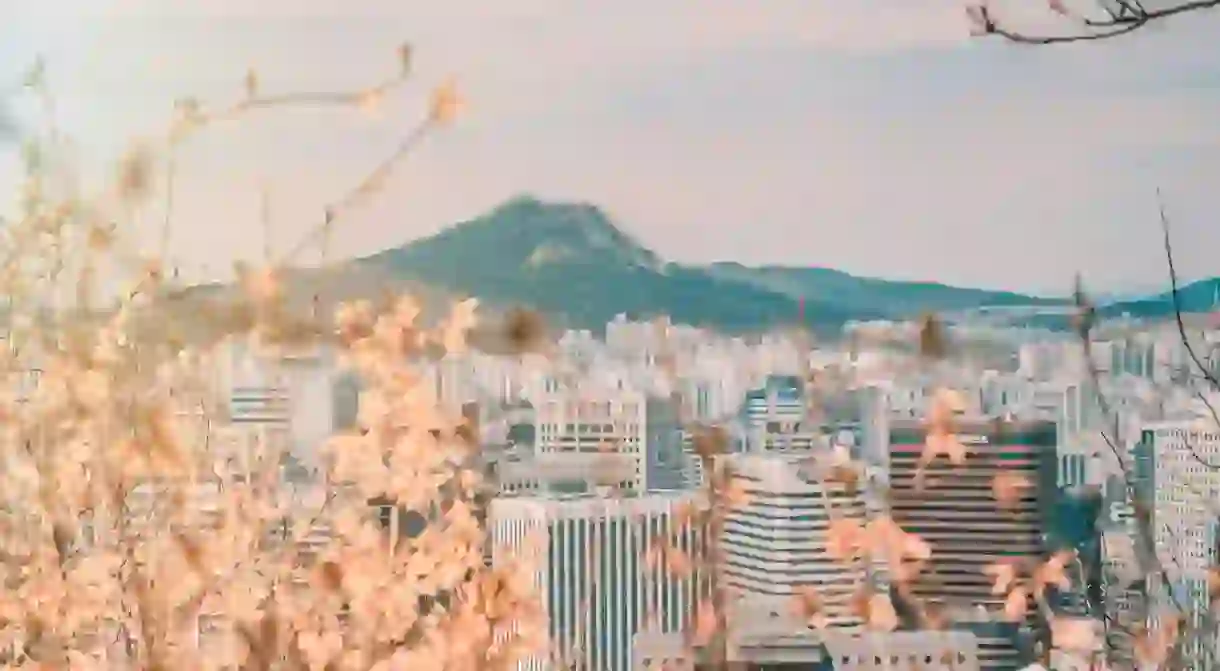A Guide to Seoul's Neighbourhoods

The whirlwind capital of South Korea sprawls – a mass of 25 districts make up the city, each with unique attractions and history. Dividing Seoul into two halves is the Han River, with Ganbuk to the north and the now-world-famous Gangnam to the south. How do you even begin to navigate your way around? Right here – we’ve rounded up the neighbourhoods you have to know in Seoul.
North Of The River (강북 Gangbuk)
Jongno (종로)
Architectural Landmark

Here’s the historic core of the city, home to Seoul’s five grand palaces. Between the second largest, Changdeokgung, and the main event, Gyeongbokgung, lies Bukchon Hanok Village, a traditional area of classic Korean houses with huge curving eaves and wooden frames, called hanok. Just south is Insadong, a busy shopping area with teahouses and places to grab a bite. Further south still you come to the Cheongyecheon Stream, recognisable as the venue for seasonal events and open-air exhibitions. If you like art, you’ll love wandering through Ihwa Mural Village in the north of this district.
Jung (중)
Market

Nowon
Architectural Landmark
This mostly residential area in the far north-east of the city is a hub for universities and academies, which explains the buzzing crowds of students and young families. Bordered by the Suraksan and Bukhansan mountains to the north, it’s also a great place to pitch up if you get the sudden urge to exit the big city and stretch your legs in nature. Flowing through the neighbourhood is the Jungnang Stream, which lends itself to jogging, skating and cycling. Here with the family? There are also plenty of playgrounds and parks for kids to run wild in.
Seodaemun/Mapo (서대문/마포)
This district is home to educational facilities including Yonsei University, one of Korea’s most prestigious places of learning. The most vibrant areas in this part of town are Hongdae and Sinchon, bustling with shoppers and a constant whirl of restaurants. Entertainment is a big pull – indie rock musicians and artists have settled in the area, running independent galleries, cafés, clubs and bars.
Yongsan (용산)
Yongsan is where you’ll find most of Seoul’s foreign residents – unsurprisingly it’s the site of a US Army Military Base. In fact, the Itaewon quarter is the most culturally diverse area in South Korea, home to its sole mosque. The neighbourhood is characterised by masses of restaurants and import stores and you’ll also find the enormous wholesale Yongsan Electronics Market here. Meanwhile, the Starcraft Esports Arena regularly broadcasts games on TV.
Gwangjin (광진)
This district encompasses the Konkuk University neighborhood, Kondae. People come here for cheap eats and a more laid-back shopping experience minus milling crowds. Kondae Taste Street is particularly recommended, lined as it is with cute cafés and quality restaurants serving Western and Korean dishes. Among the undisputed highlights of Gwangjin District is the Common Ground Mall, with commercial spaces created out of shipping containers purveying Korean designer brands.
South Of The River
Gangnam (강남)
Shopping Mall

Songpa (송파)
What was once an exclusively residential area has evolved into a hugely popular entertainment hub, thanks to the arrival of Lotte World, an expansive shopping mall also home to the world’s largest indoor amusement park. Songpa is home to the Olympic Park and Seoul (Jamsil) Sports Complex, where international music stars perform some of the best shows in Asia. All in all, this is one of the most action-packed districts of the contemporary capital.
Yeoui-do (여의도)
Often called the Manhattan of Seoul, Yeoui-do is an island in the Han River, sprouting some of the city’s tallest buildings. Here you’ll find the Seoul Stock Exchange and the National Assembly, along with one of the area’s most prominent landmarks: the 63 Building has some of the most popular attractions around, including an aquarium, an IMAX, the vertiginous 63 Sky Art Gallery – said to be the highest on the planet – and, on a more retro note, a wax museum. Here in spring? See if you can make the annual Cherry Blossom festival, as 1,800 trees burst into clouds of pale, ephemeral petals.
Yangcheon (양천)
South-west of the Han river, this up and coming district is home to some of the tallest residential edifices in the city, compensated for by the many parks and green areas. One of the most popular attractions here is the Mokdong Indoor Ice Rink, located in the centre of the district close to many restaurants, bars and shopping facilities.

Gangdong
Head out to the easternmost side of Seoul and you’ll find Gangdong, a quiet district on the Han River. What it lacks in the kind of bright lights and entertainment the city centre enjoys, it makes up for in unique historical and natural sites. It’s where you’ll find the Amasdong Pre-history Settlement Site, where you’ll learn about what Korea looked like during the Neolithic era, with ancient artefacts and scale reconstructions. Gangdong is also just one metro stop away from Mount Acha, a picturesque hiking spot with amazing views over the city.













